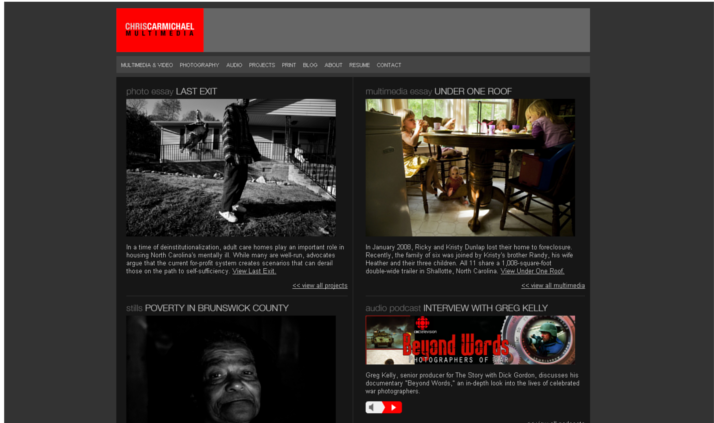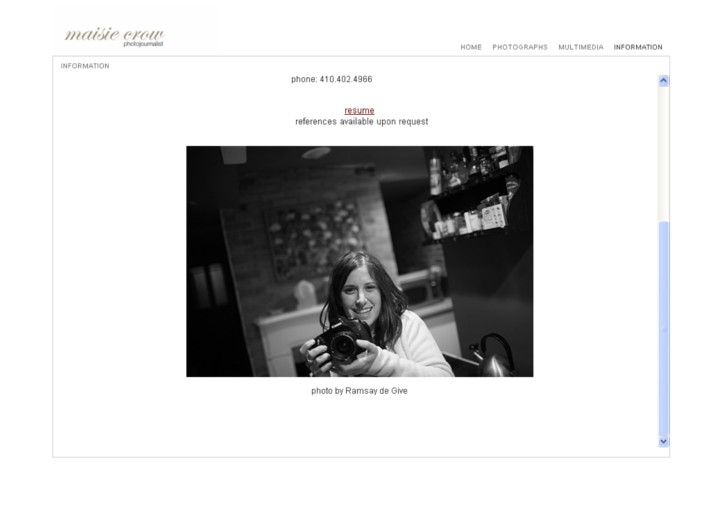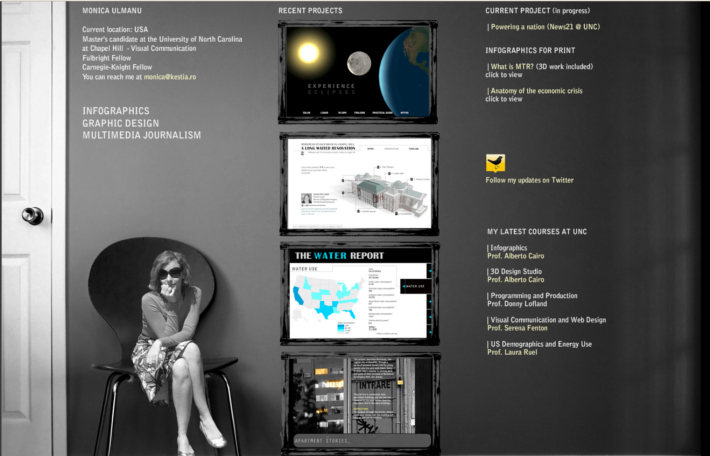This is the first post in a series of six blog posts by Adam Westbrook, each with six tips for the next generation of freelance multimedia journalists, republished here with permission.
Follow the series at this link or visit Adam’s blog.
Branding
Even as far back as 2006, the likes of Andrew Neil appreciated the journalists of the future will need to brand themselves well. “The journalist of the future…will have more than one employer and become a brand in his own right” he wrote. With full time jobs in well staffed newsrooms becoming more sparse, but opportunities outside traditional/mainstream journalism becoming more plenty, this prediction is coming true. So, what can you do to boost your brand?
1) Own your name
The first thing to overcome is the embarrassment or discomfort of ‘blowing your own trumpet’. For some people the idea of self branding is for cocky self promoters. Well guess what: if you’re going to succeed as a freelancer, some self promotion has gotta be done. Oh, and aim for confident, not cocky.
As a freelancer especially, your brand is your name. Therefore you need to own your name, especially in cyberspace. You should try and own your domain name (www.yourname.com or www.yourname.net or www.yourname.co.uk). If you’re running yourself as a business with its own name that’s OK too.
Lisa Barone at Outspoken Media agrees: “It’s always better to have the username and not use it, then need to wait and kick yourself later when someone else grabs it. Having a unified social media username is very important in establishing trust with other members.”
Another unpopular thing to do: Google your own name. How far up does it come? If an editor or potential client needs to find you, you must be high up the rankings. You don’t need to pay for this (although you could); instead you should be putting up authoritative quality content which gets you those all important links, diggs and retweets from readers.
Brian Clark, in his excellent Authority Rules e-book, makes the point that if ‘people think you’re important, so will Google’.
2) Define your niche
The branding experts tell you if you’re going to have a brand, people need to know what you’re about. And you need to be able to give someone the elevator pitch about yourself too. A niche will give you a vital advantage over general-news journalists. Freelance science journalist Angela Saini for example knows what she’s good at (science) and has successfully built herself a reputation as a science journalist around that, in less than a year.
If you don’t have a niche, don’t worry too much. But just be able to sum up what you’re about: not only will it define your branding, it’ll help keep you focused on what projects you pursue.
3) Have a good great website and blog
As a multimedia journalist your content exists for the web. And so to not have your own web presence is ludicrous. But your website must be great (not just good). It must stand out and most importantly be designed to show off what you’re good at.
So:
- if your selling point is the great photographs you take, make sure your website has a huge single column on the front page, with a flash platform displaying your best photos at their best;
- if you’re a video journalist, your front page should have an equally large, single-column, splash video showreel;
- if you’re about the audio, think about getting a visually exciting audio player, again at the top of the front page.
Here are three original, striking and inspiring portfolio websites to get you going:



A blog is another crucial element for the multimedia journalist, for several reasons. It keeps your website current and up to date; it allows you to build on your brand and show off your expertise with some well written authoratitive blogs; and allows you to build and engage with a community of other journalists and even clients.
Back to Brian Clark at Authority Rules: “Your content actually demonstrates your expertise, compared with a website or bio page that claims expertise.”
4) Have a fresh CV and showreel
After your blog and front page portfolio, the most important thing visitors will need to be able to find is your CV/resume and showreel. Have it in the top navigation bar and in one of your sidebars.
Your CV must be in pdf format (or a Google Doc) and up to date. You can chose to have it typed up in the page as well. Create an image button to make it more attractive. Mindy McAdams says your CV is vital to prove your claims, so ‘your real work experience should be easy to find and easy to scan quickly. People will want to check this for verification, so dates should be clear, not obfuscated’.
Your showreel must also be up to date, especially if you are pitching for daily news work. Radio journalists especially: make sure your uploaded bulletin is only a few weeks old.
Upload your showreel and embed it into your web page. That way potential editors and clients don’t need to download large files to be able to see what you do. Vimeo is ideal for video. Soundslides does the job for photographs and audio slideshows. And I use Soundcloud for embedding audio. If you can, use flash to give your showreel some animation. Freelance radio journalist and web designer Katie Hall does this to good effect on her site.
5) Keep your networks consistent
An important part of brand management is consistency. The internet is a hugely powerful tool for connecting with people, so it is important you spread yourself across as many social networks as possible: Twitter, LinkedIn, Demotix, Current TV and Facebook to name just a few.
But keep them all consistent. Have the same username for each – and make it your name. My Twitter name is AdamWestbrook, as is my Vimeo and LinkedIn profile. My Facebook URL is facebook.com/AdamWestbrook.
And do the same with images. Have one image of yourself (it’s called a Gravatar) and use that for your profile images. One name, one image, one brand.
6) Get business cards
All these tips so far have been for branding yourself in the online world. Amazingly the real world hasn’t given up the ghost through lack of attention just yet, and it’s equally important to promote yourself at networking events, conferences and other shindigs.
Business cards are a necessity. There are many sites offering this service, not to mention high street stores, but UK born website Moo.com has been recommended to me far too many times for it not to be good. They’ll even give you 50 free business cards as a trial.
The final word…
Now I know I’ve pushed for you to brand yourself as your own name as a multimedia journalist. It’s a lot quicker, cheaper and easier than creating an actual stand alone business. But a wise word of warning comes from James Chartand at Freelance Switch:
“A personal brand traps you into always being present in your business. You will be at the mercy of your clients and your career (…) your personal reputation is at stake. One bad day, one slip, a job gone sour, an unhappy client spreading rumors, and your reputation is tarnished.”



